Uffizi, refurbished Sale dei Fiamminghi and Sala dei Marmi Antichi
The Uffizi Galleries renew and expand with a double inauguration celebrating the refurbishment of two important spaces in the Florence museum. In the presence of the Minister of Culture, Gennaro Sangiuliano, and the director of the Galleries, Simone Verde, the new rooms dedicated to Flemish masters of the 15th and 16th centuries and the Cabinet of Ancient Marbles, reconstructed in its original form, are unveiled today.
The new rooms on the museum’s second floor house a selection of 31 paintings by the greatest masters of the Northern European Renaissance, including Albrecht Dürer, Lucas Cranach, Hans Memling, Nicolas Froment, and Rogier van der Weyden. These masterpieces, displayed in three frescoed rooms in the first corridor, illustrate the meticulous and “almost photographic” art of Flemish, Dutch and German painters, highlighting the mutual influences between the Northern European and Italian schools of art.
In addition, after 200 years, the Cabinet of Ancient Marbles is resurrected, reconstructed in its original configuration. This space, a veritable treasure trove of antiquities, houses some of the most celebrated Roman sculptures in the Medici collection, including the green basalt torso of the Wadi Hammamat and the Spinario. The walls of the room are adorned with a series of Roman reliefs that, reassembled in their original location, restore the charm that characterized this room when it opened in the 19th century.
The new Flemish rooms
The Uffizi Gallery opens to the public new rooms devoted to Flemish and German painting of the 15th and 16th centuries, presenting masterpieces by Albrecht Dürer, Lucas Cranach, Hans Memling, Nicolas Froment and Rogier Van Der Weyden. The exhibition, consisting of 31 paintings, is set up in three frescoed rooms located in the first corridor of the second floor, between the Buontalenti Tribune and the Cabinet of Miniatures.
These recently refurbished spaces house one of the most important collections of Northern European painting in Europe. This collection was originally brought together in the first decades of the last century by Roberto Salvini, director of the Uffizi after World War II, who put these masterpieces in dialogue with those of the Italian school, highlighting mutual influences in an “internationalist” approach that today we would call “global.”
The new arrangement aims to re-propose this dialogue, illustrating the modes of expression of Renaissance culture in northern Europe (Flanders, Holland, Germany) in comparison with the works of the Florentine Quattrocento. Tuscan Renaissance painting, through the cosmopolitan collecting of the Medici, received fundamental suggestions from northern painters. The latter excelled in the technique of oil painting, which created a luminous and metaphysical three-dimensionality, an alternative to Italian linear perspective.
Among the paintings on display, portraiture is particularly represented, with masterful works by Hans Memling, including the Portrait of a Man with Letter. Albrecht Dürer is also present with portraits of the Apostles and the Madonna, while Lucas Cranach the Elder contributes the famous faces of Martin Luther and his wife Catherine Bora, as well as his friend Philip Melanchthon. A significant example of the Medici’s predilection for Flanders is Rogier van der Weyden’s Lamentation over the Dead Christ, a work commissioned for the altar of the Medici Villa at Careggi, as reflected in the 1492 inventory of Lorenzo the Magnificent’s possessions (the panel recorded in the inventory is believed to be Van der Weyden’s own Lamentation ). Nicolas Froment’s Triptych, depicting episodes from the life of Jesus, returns to display after many years of absence, showing sparkling details and vivid colors. Finally, the dialogue between two large-scale pairs of Adam and Eve, one by Cranach and the other by Hans Baldung Grien, offers a special intensity to the new arrangement of the rooms. The opening of these rooms represents an important opportunity to rediscover and appreciate the influence of Flemish and German painting on the Italian Renaissance, and to recognize the value of artistic dialogue between different European cultures.
“The return of the Uffizi Galleries’ collection of Flemish painters to the public is a highly anticipated event,” says director Simone Verde. “The reason is obvious: it is the largest collection of its kind in Italy, full of celebrated masterpieces. So ours is a strategic rearrangement that also allows us to remember the figure of a great director of the Galleries, Roberto Salvini, who first saw the history of art in terms we would call global today. It was precisely through the exhibition of the Flemings, in fact, that Salvini wanted to emphasize Florence’s artistic and cultural relations with Northern Europe, restoring to our history all its complexity and connecting in a broader fabric the richness of this city as a financial and cultural capital in the Renaissance.”
“The extraordinary portrait painters of the Flemish area,” says the curator of the Uffizi Galleries’ Painting of the Fifteenth Century, Daniela Parenti, “introduced an attention to the depiction of the real datum, enriched by elements of psychological introspection, which had a great appreciation in Florence; to the point of influencing all painting not only in Florence, but also in Tuscany and in general in Italy.”
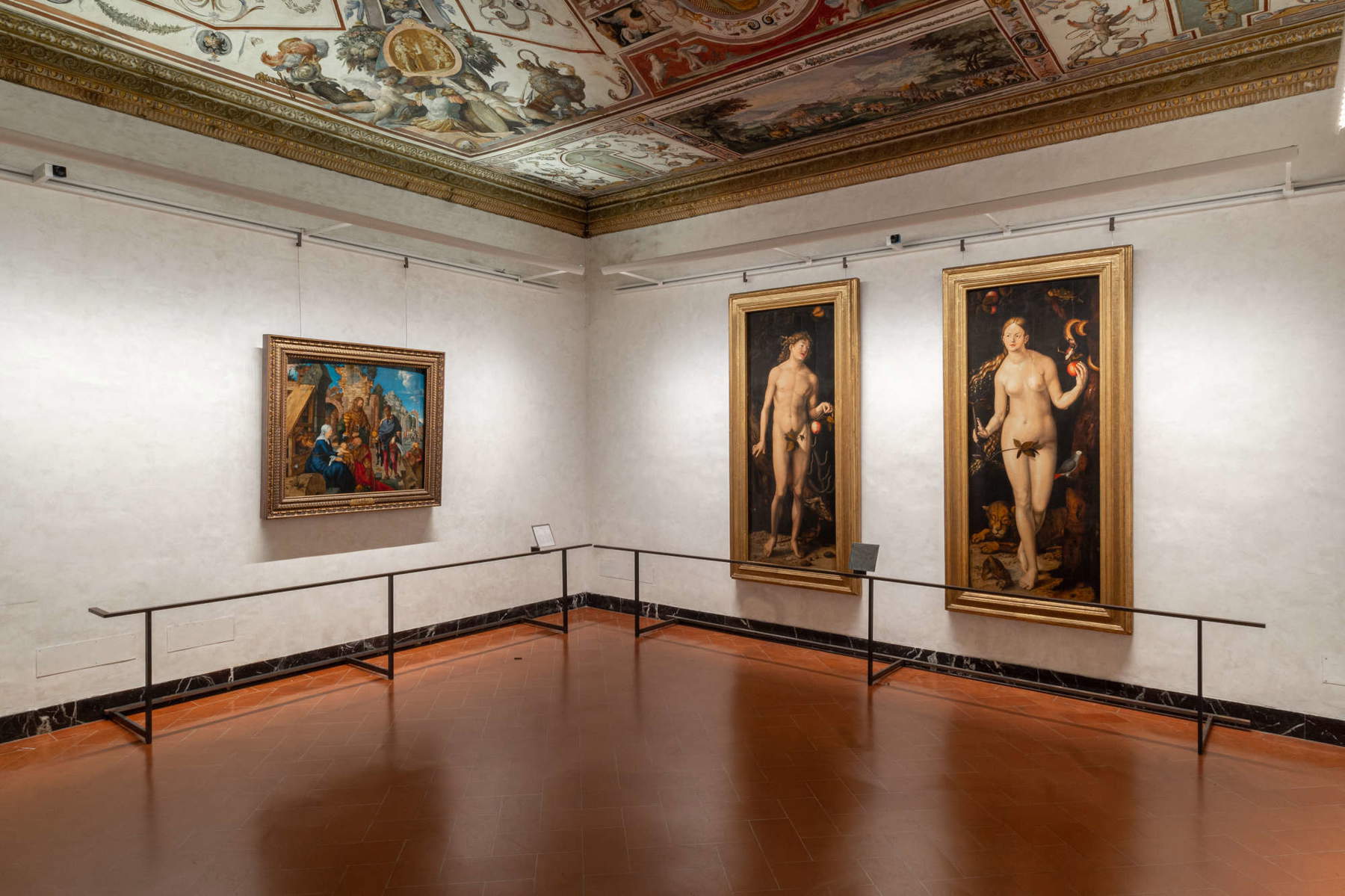
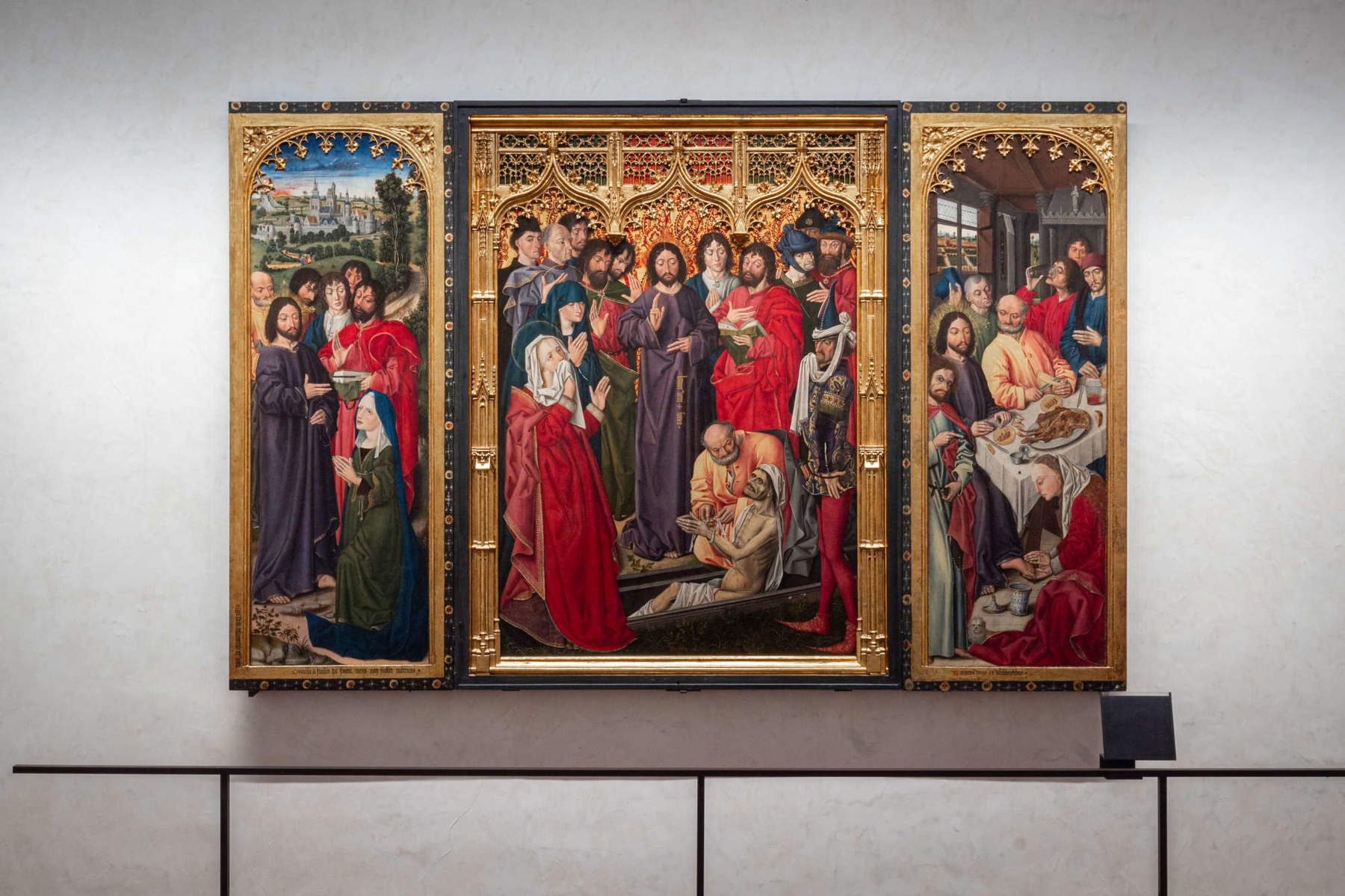
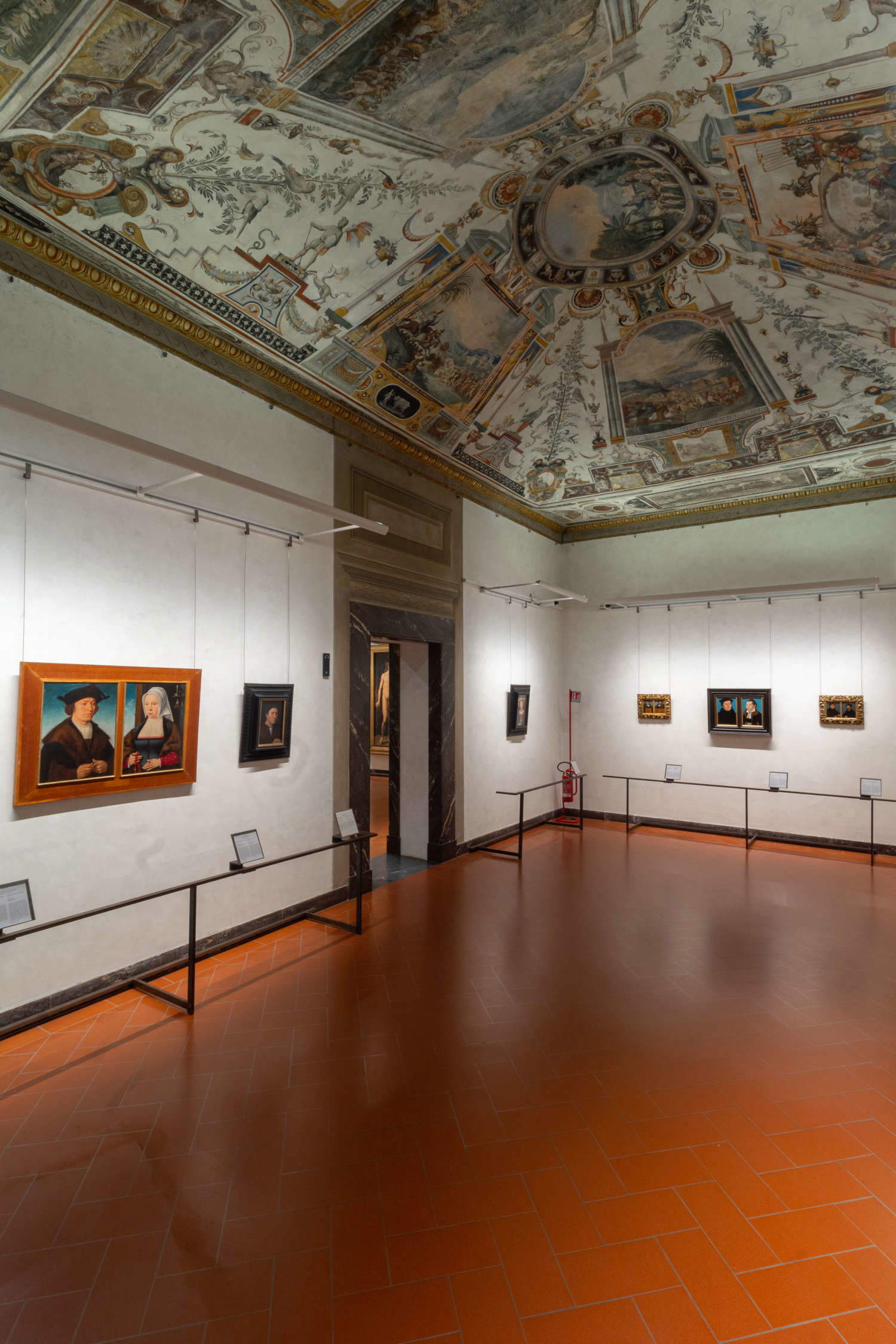
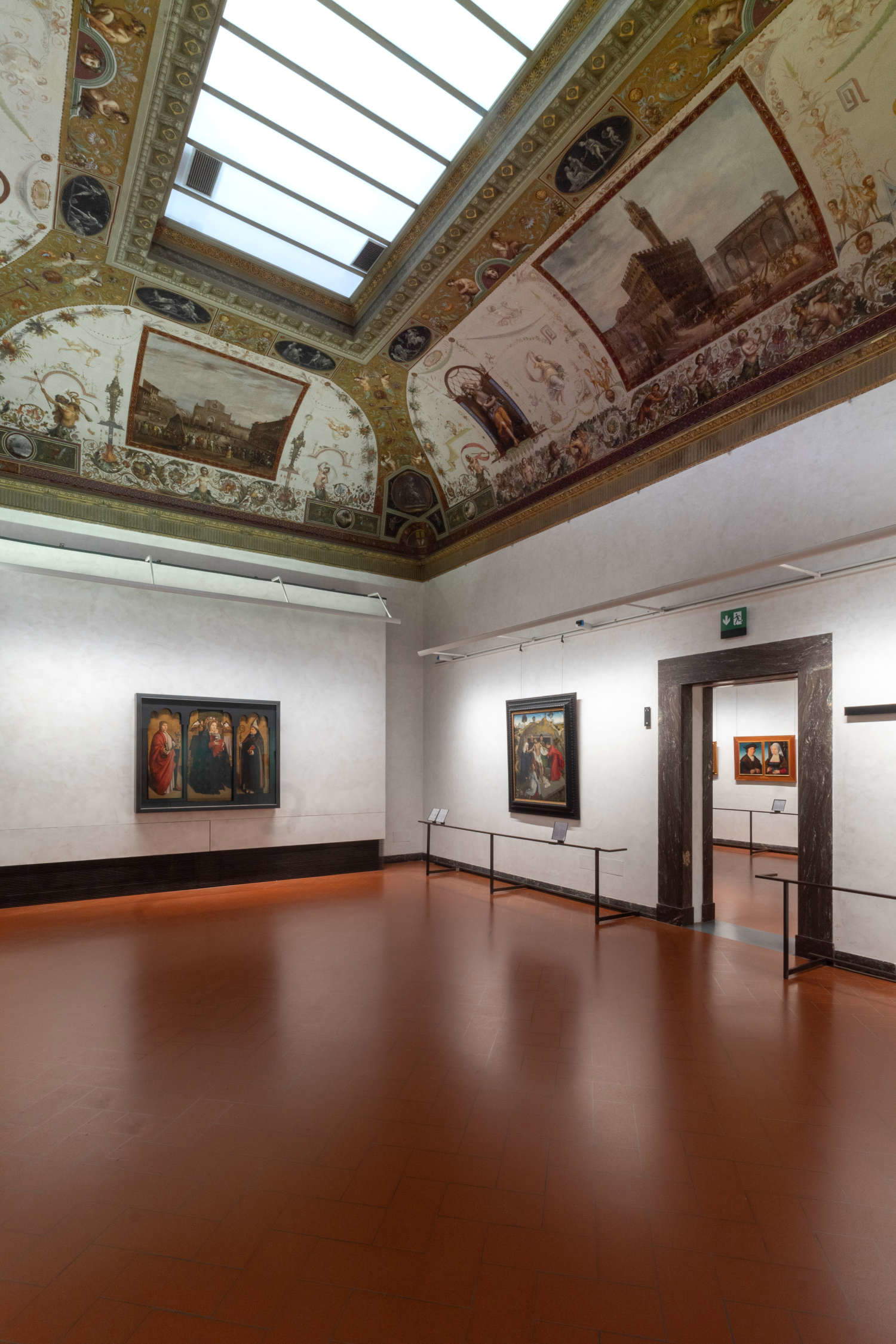
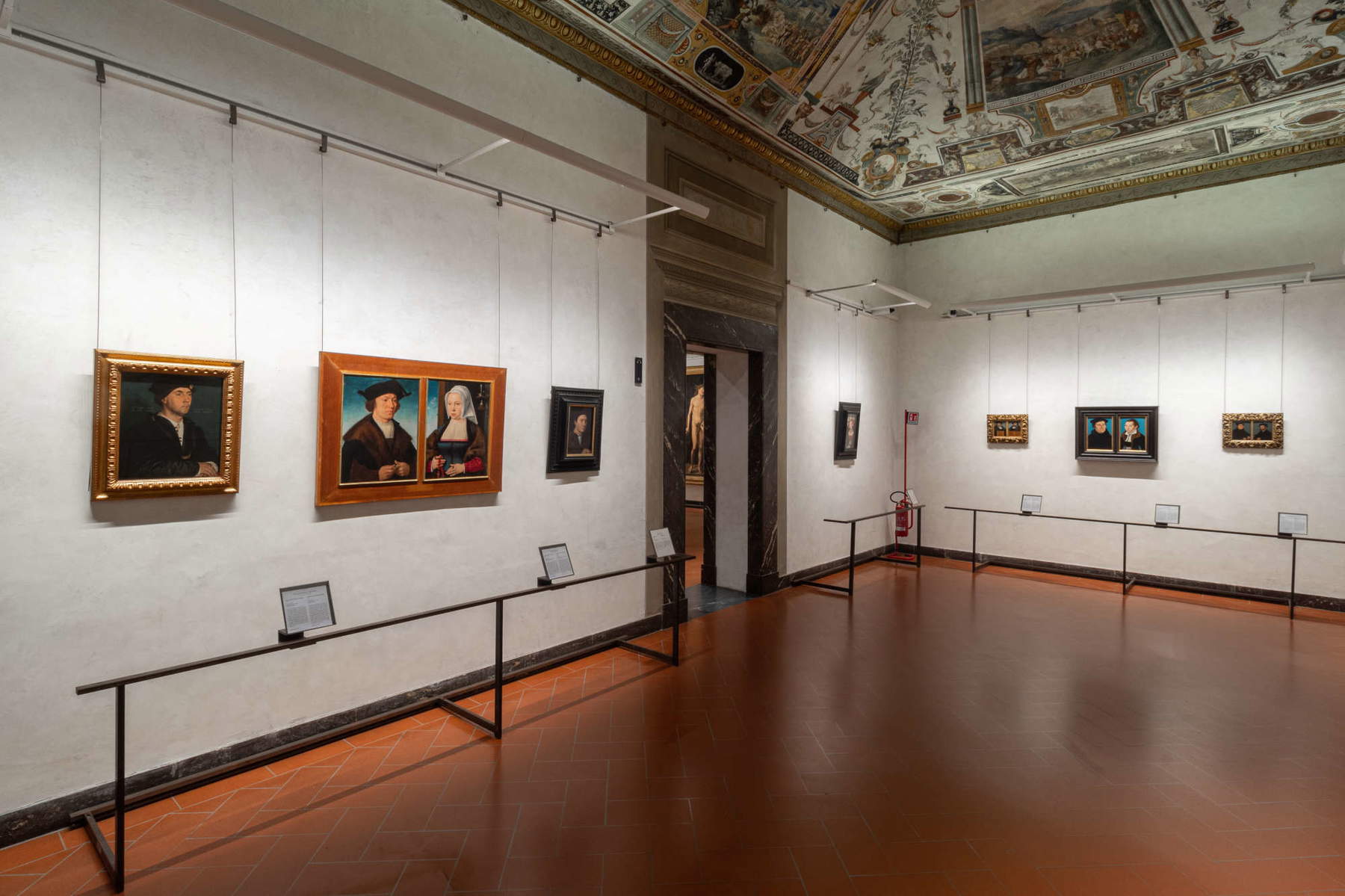
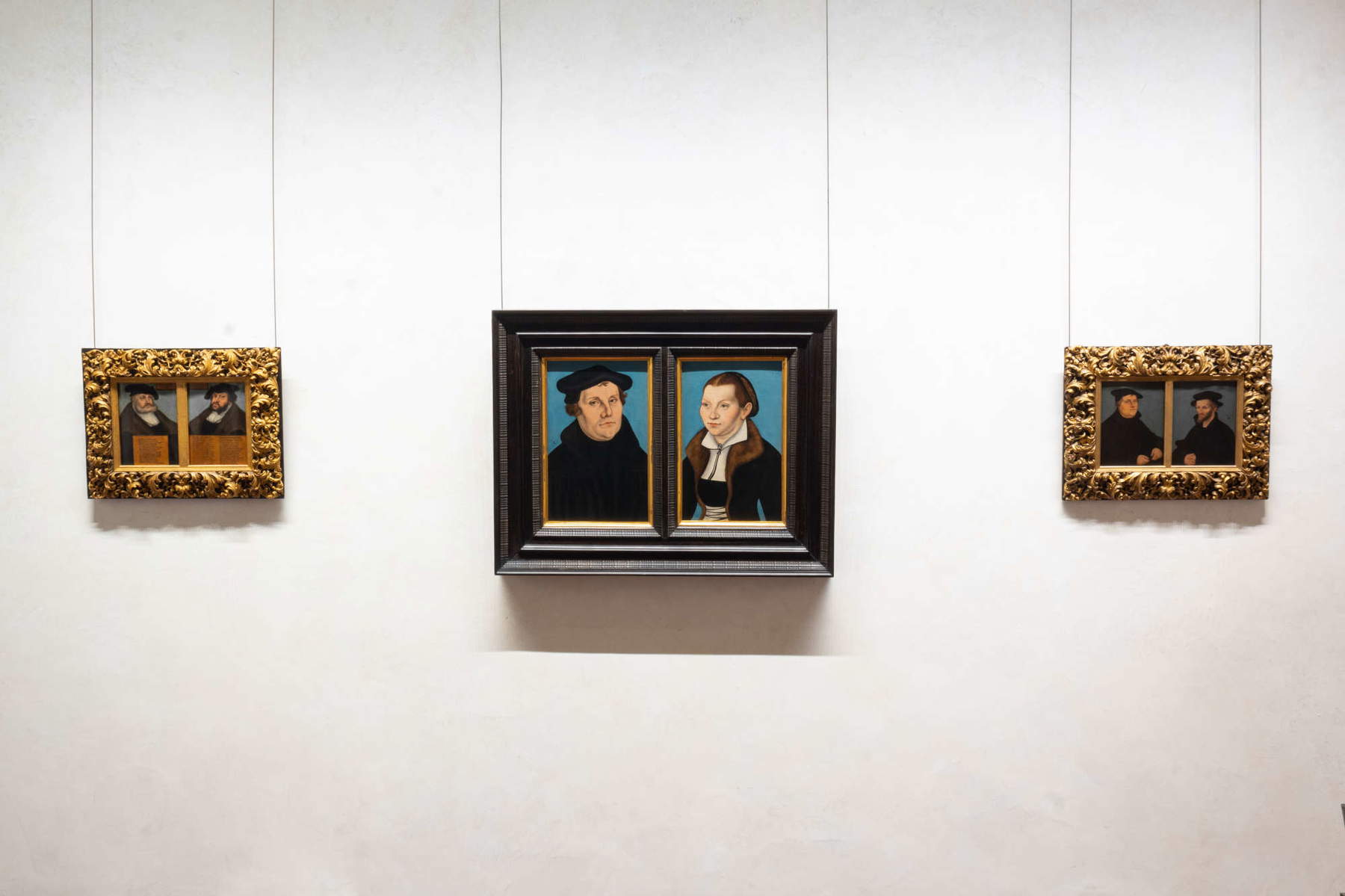
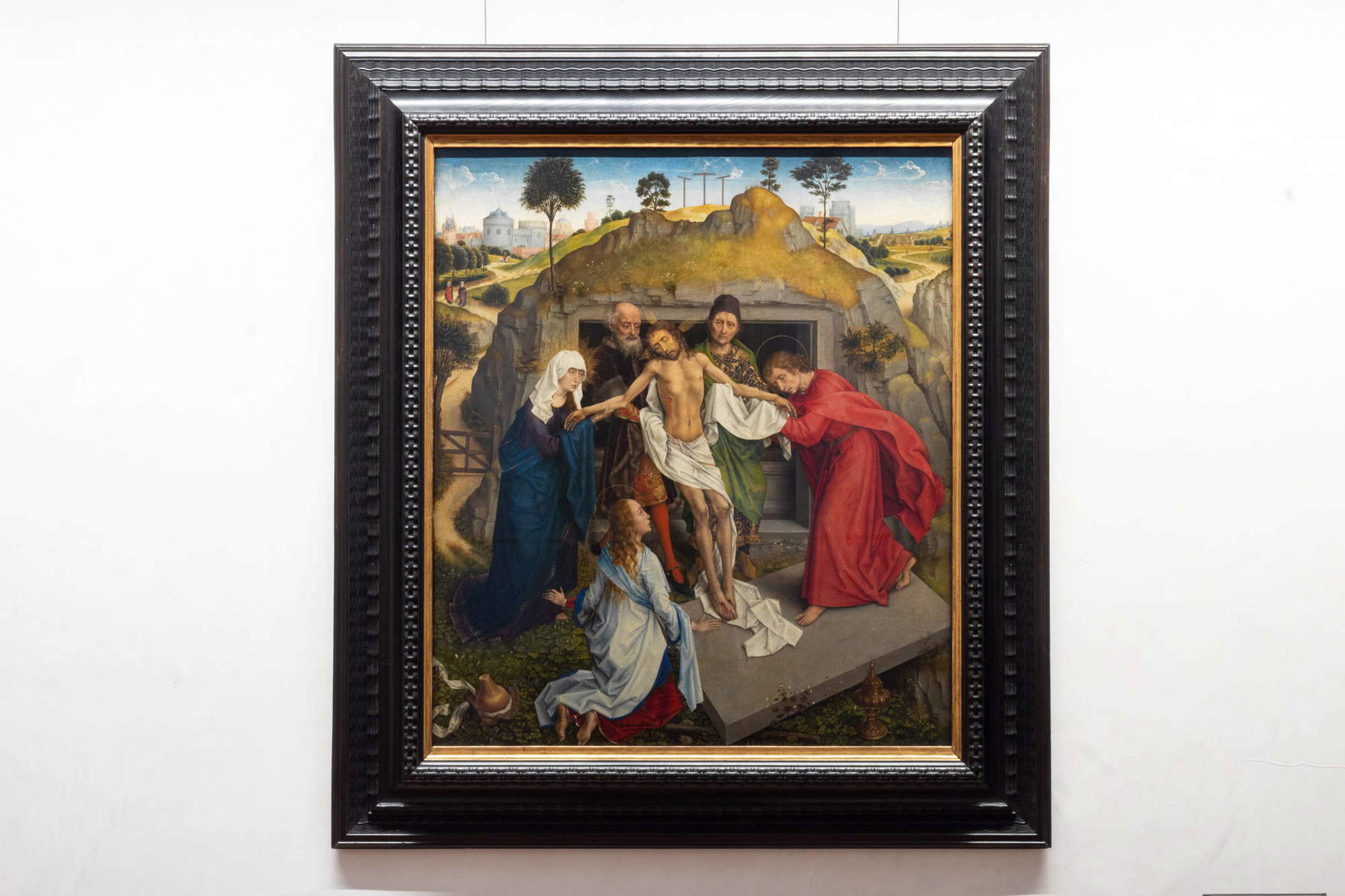
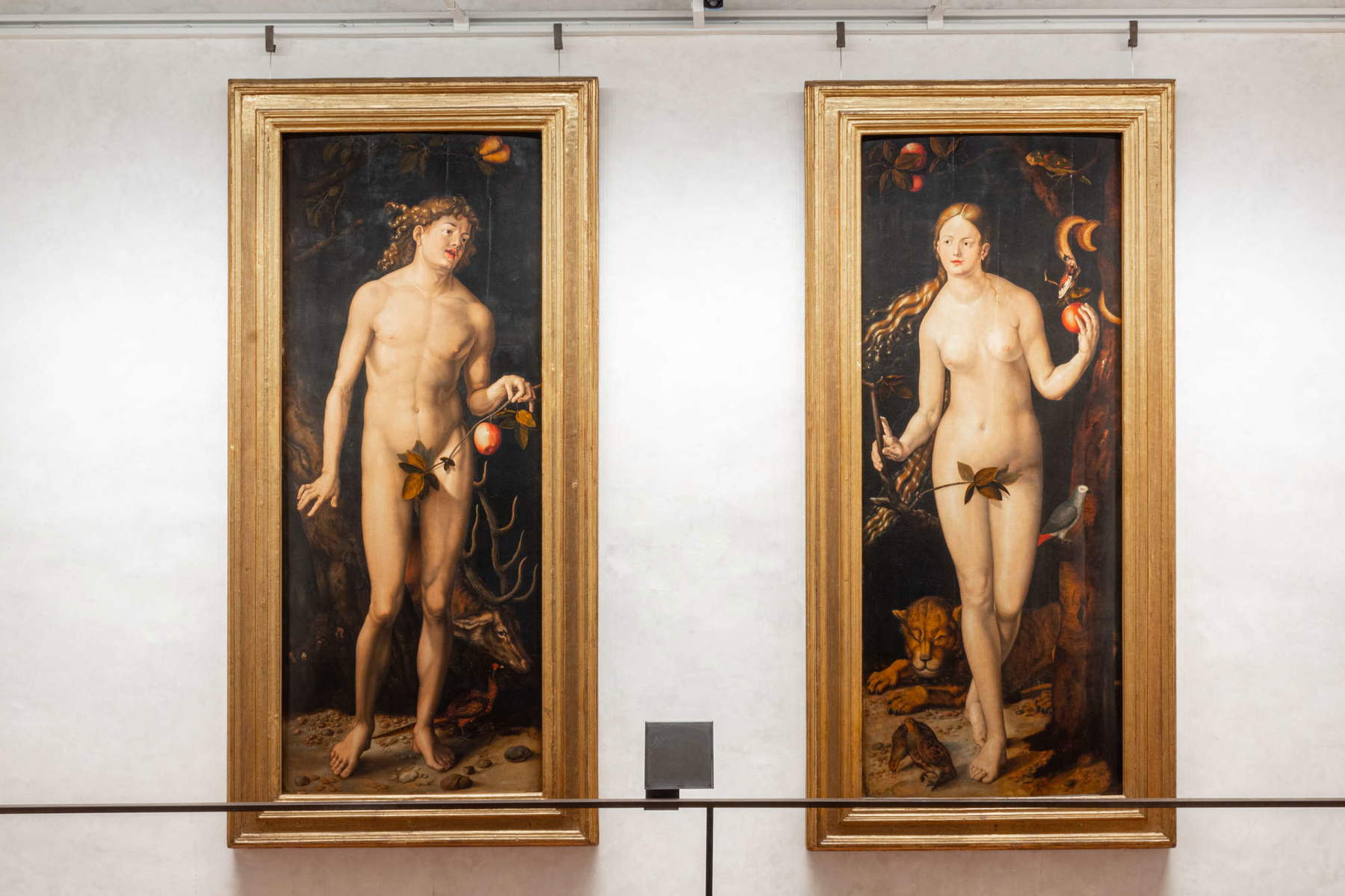
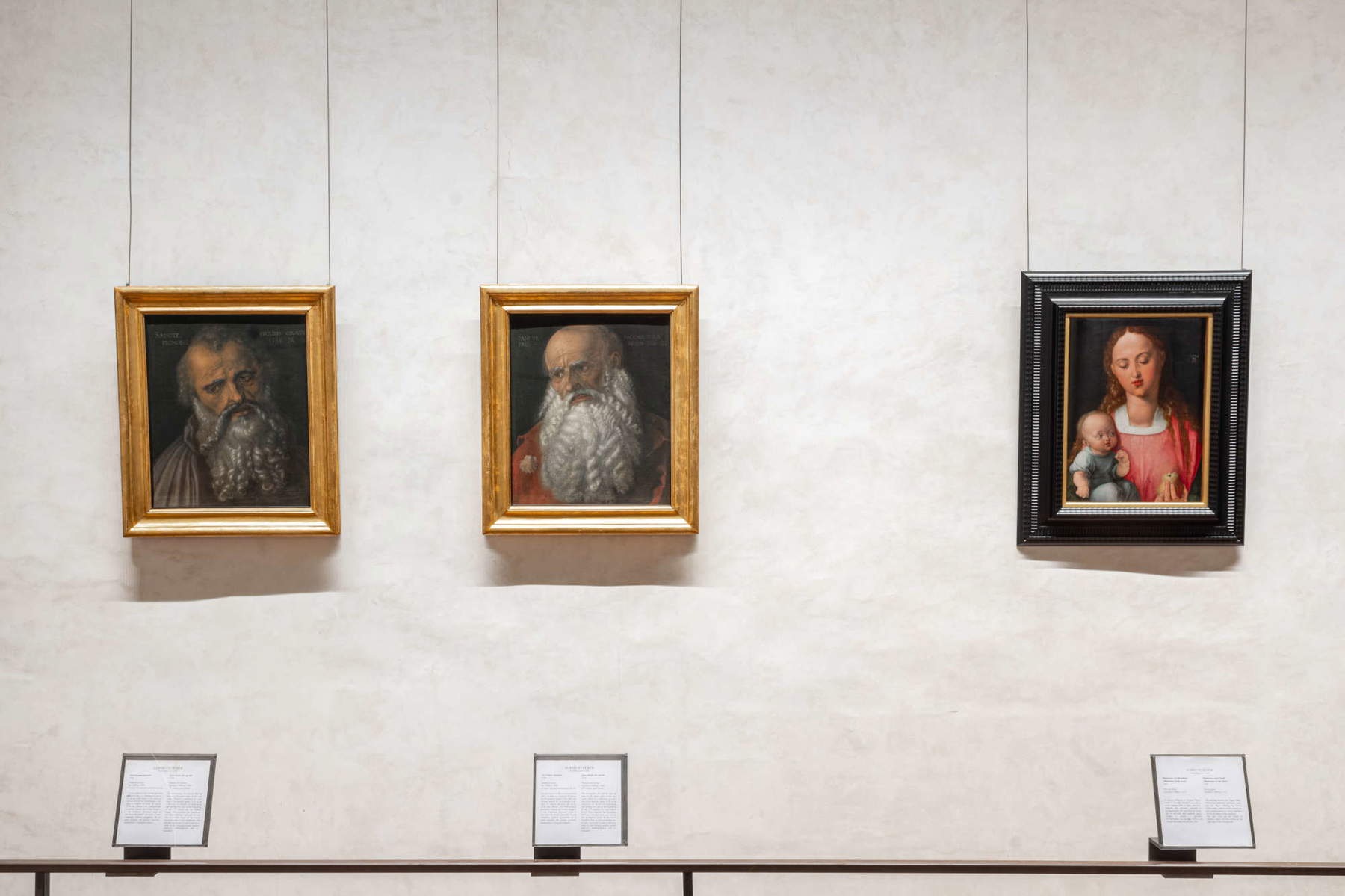
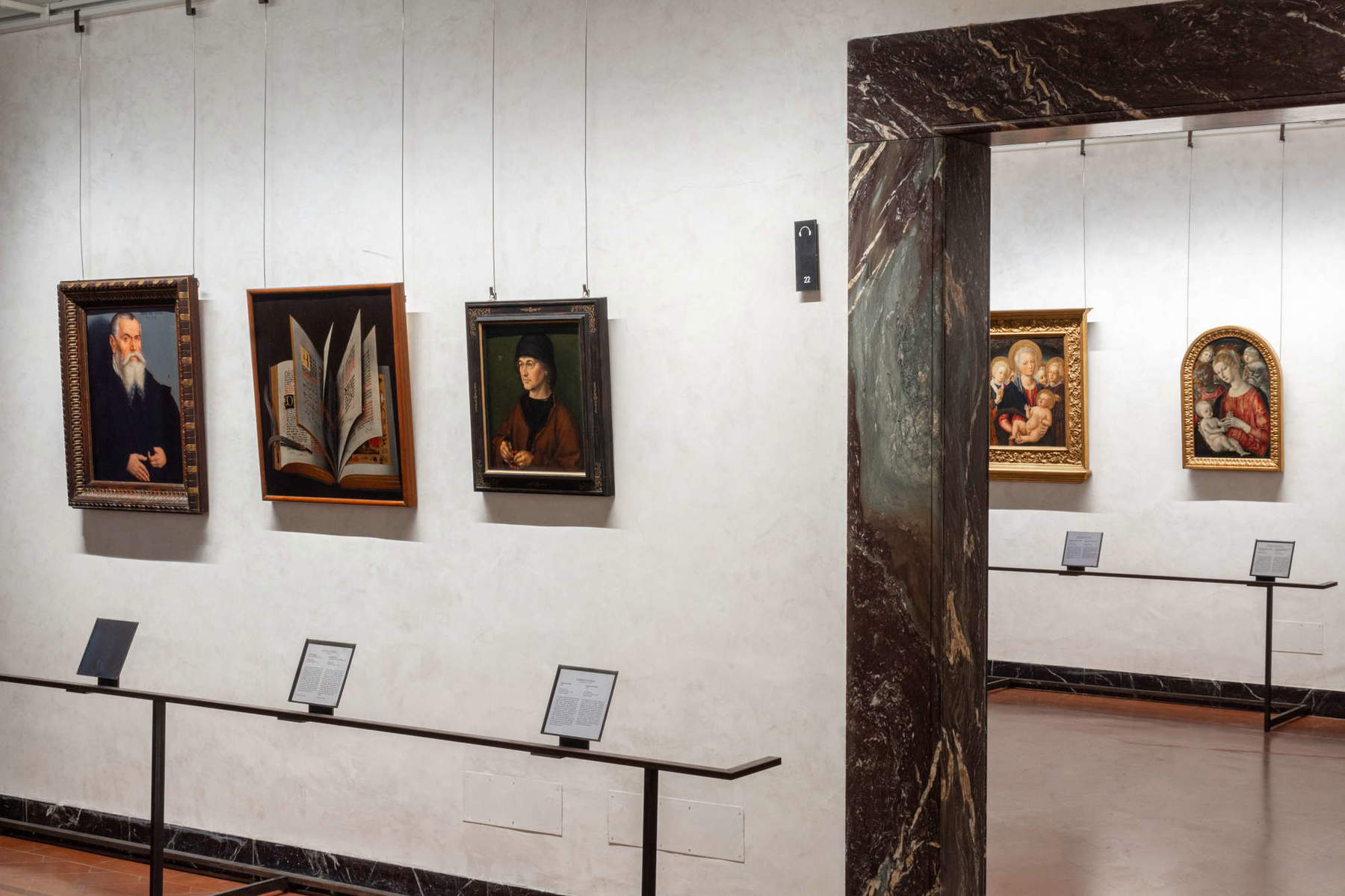
The Hall of Ancient Marbles Resurrects
After two centuries, the Uffizi Gallery is celebrating the return of one of its most exemplary spaces: the Hall of Ancient Marbles. Rebuilt in its original form, this room houses some of the most celebrated sculptures from the grand ducal collection and Roman reliefs set into the walls, recreating the atmosphere it had at the time of its inauguration. The Marble Cabinet, now reopened, houses a selection of the most important Roman sculptures from the Medici collection, enhanced by the marble reliefs that made it unique.
Prominent among the works on display are the two reliefs with pillow and cloth sales, from an Esquiline tomb from the Flavian period, and the figure of the seated shepherd, part of a monumental nymphaeum from the early imperial age. Also notable is the reproduction of the temple of Vesta flanked by the ruminal fig tree and the depiction of Zeus Ammon, a syncretistic deity of the Hellenistic-Roman period, part of the sculptural decoration of the Forum of Augustus in Rome.
The display also includes the green basalt torso from the Wadi Hammamat, one of the best replicas of Polyclitus’ Doriphorus, and the Spinarius, one of seven known copies of this late Hellenistic sculptural type. Also among the sculptures returned to visibility is the statuette depicting Seated Menander, one of three known copies of this iconographic model from the third century B.C.E., and the group of Hermaphroditus and Pan, a lively composition from the early imperial period.
The Marble Room occupies a place of great historical importance: until 1825, a terrace built in 1658 during the reign of Ferdinand II stood here. The purchase of Chancellor Nizzoli’s collection of Egyptian antiquities in the early 19th century necessitated the creation of new exhibition space, leading to the decision to cover the terrace in order to expand the museum itinerary.
The resulting vast space was divided into two cabinets: one dedicated to Egyptian antiquities and one to classical sculpture, centered around the famous statue of theSleeping Hermaphrodite. Illuminated by a large skylight, the room was ideal for housing a selection of the Uffizi’s most important marbles. Roman reliefs, positioned at the top of the walls, crowned the series of busts and sculptures arranged around the perimeter, creating a spectacular effect.
This arrangement, evidenced by Alinari photographs until the 1880s, was modified in the early twentieth century and finally erased in the middle of the last century. Today, the reopening of the Hall of Ancient Marbles marks a return to its origins, restoring to the public the charm of a space that is a symbol of classical art and the very history of the Uffizi Gallery.
“The rearrangement of this space that is so iconic to the history of the Uffizi,” stresses Director Verde, “echoes the spatial conception of the museum set in the eighteenth century by the great art historian and vie Luigi Lanzi: a pictorial itinerary hinged on the centrality of the arts of the Renaissance which, if they were displayed in the long corridors, were in turn punctuated by side cabinets, that is, rooms ’tangent’ to the itinerary itself, which housed relics of the ancient world bearing witness to the artistic and cultural models that had led to the rebirth of classicism in Renaissance aesthetics. In this logic, the most important cabinet was undoubtedly precisely the one we are re-inaugurating today: not only for the beauty of the sculptures and marbles received (irrefutable proof of the taste and breadth of the Medici collection of antiquities), but above all for the recovery of the models and ideals of classicism represented in it in the most extensive and courtly form accessible to European antiquarianism.”
“The new layout of the relief room,” says the curator of Classical Antiquities at the Uffizi Galleries Fabrizio Paolucci, “marks the return of a prestigious room on the piano nobile to its former owners: the classical sculptures of the grand ducal collection. This space, created in 1825 to house exclusively ancient marbles, now returns to be populated by a fine selection of reliefs, busts and full-length sculptures, including such absolute masterpieces as the basalt Doriforo torso or reliefs with scenes of the sale of cushions and fabrics. Their arrangement also follows, in part by reproducing it punctually, the original arrangement, restoring to the visitor the charm and atmosphere of the years when the Uffizi was known throughout Europe as the ’Gallery of Statues’ par excellence.”
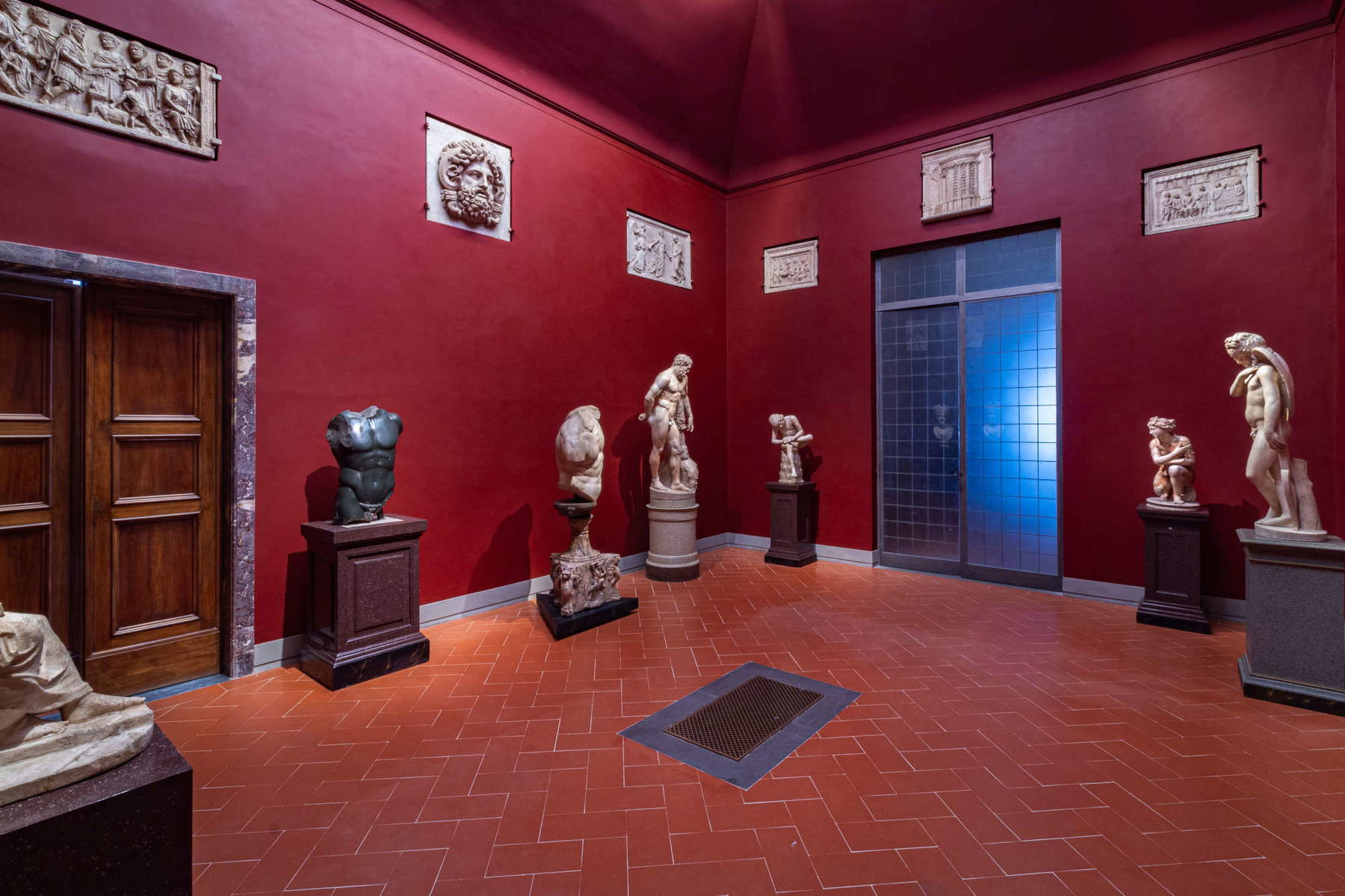
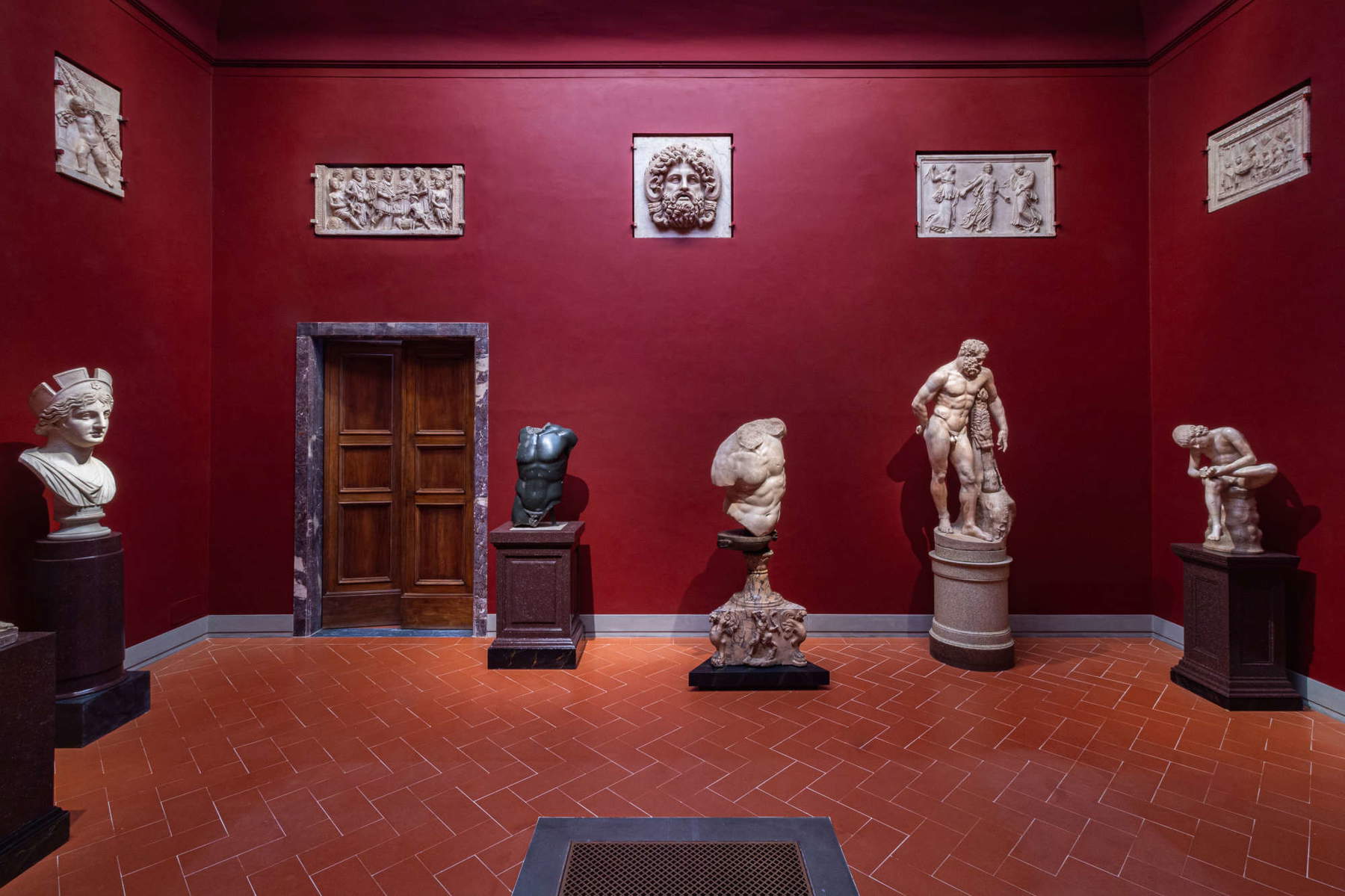
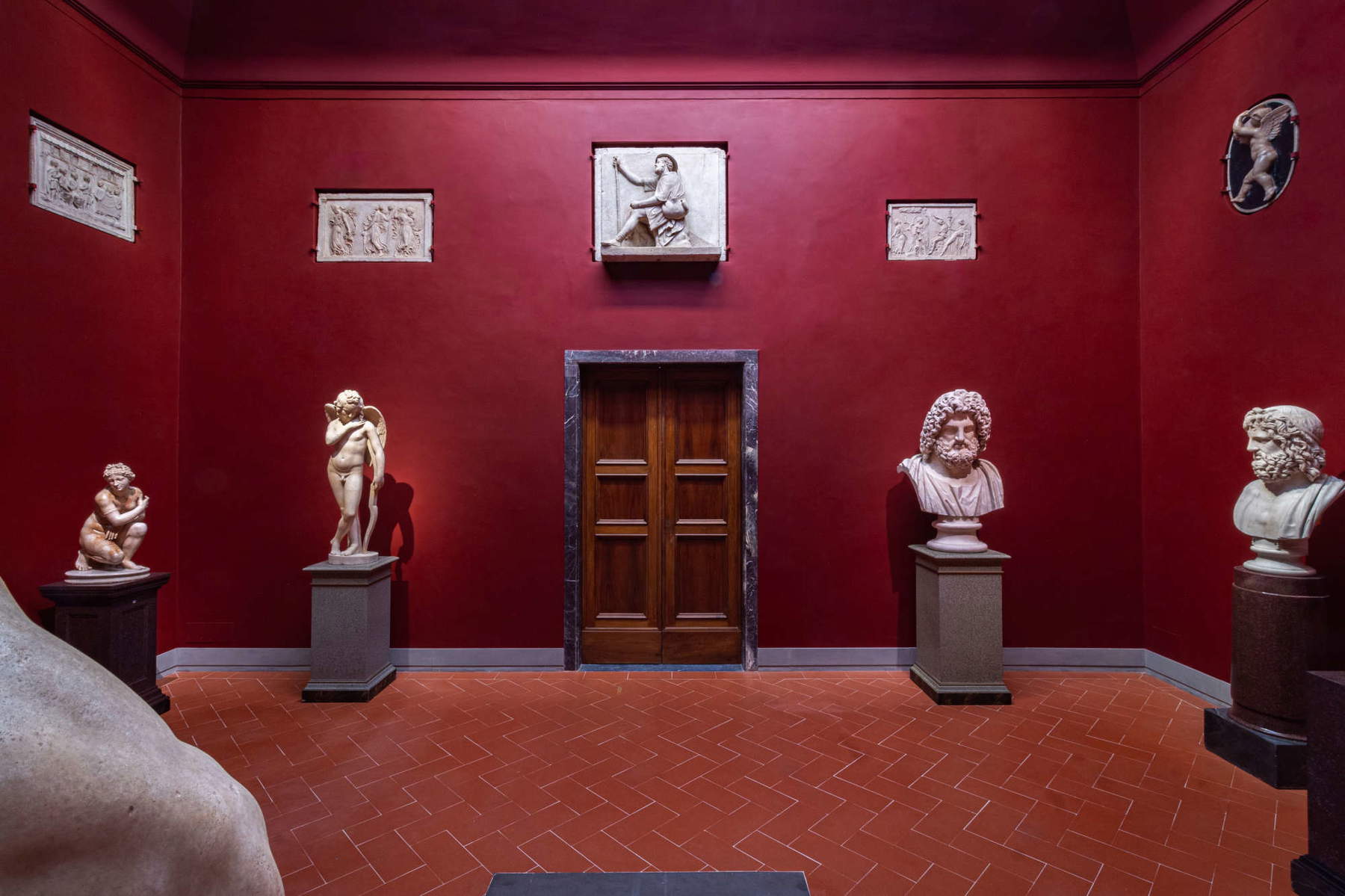
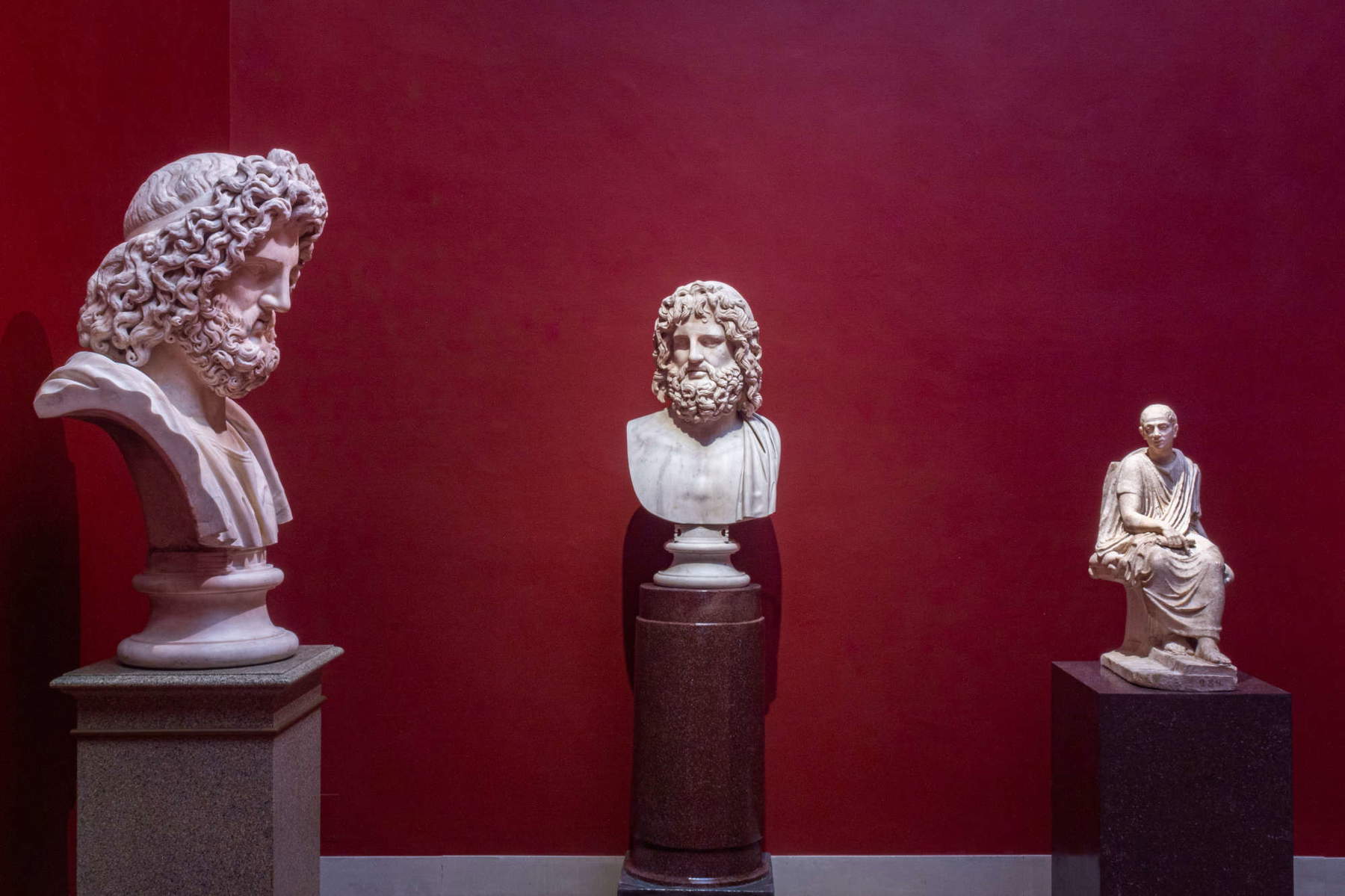
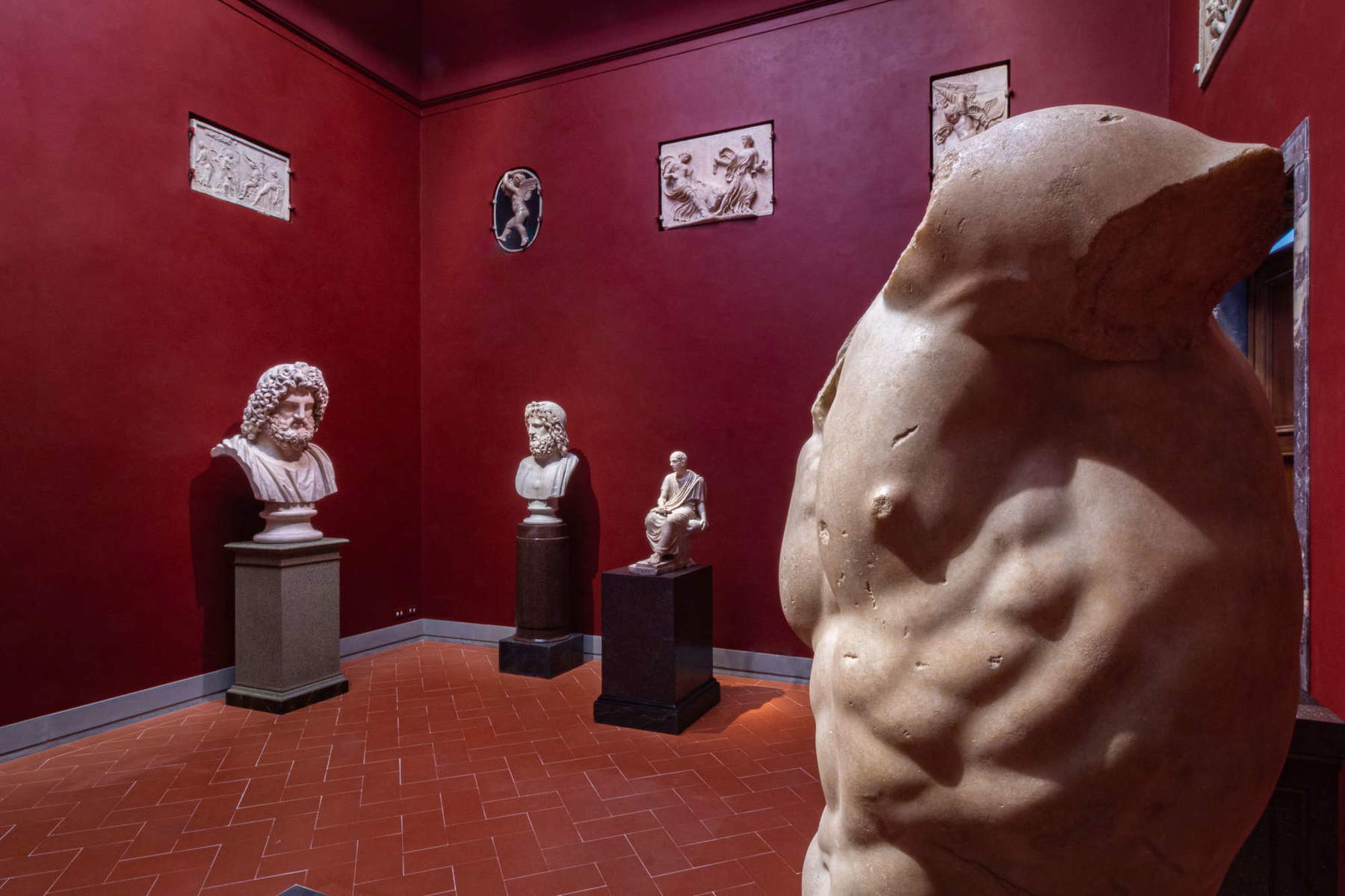
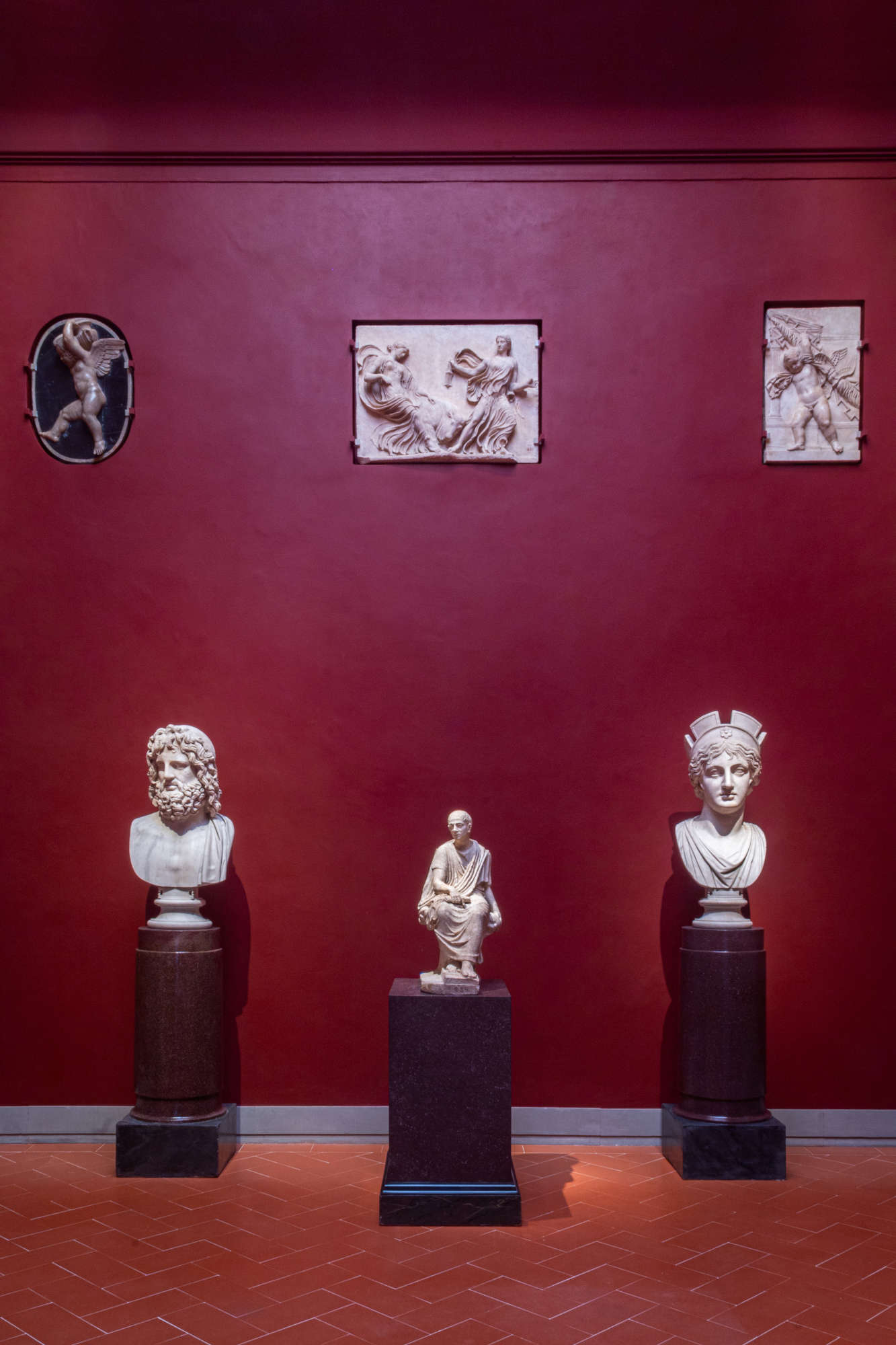
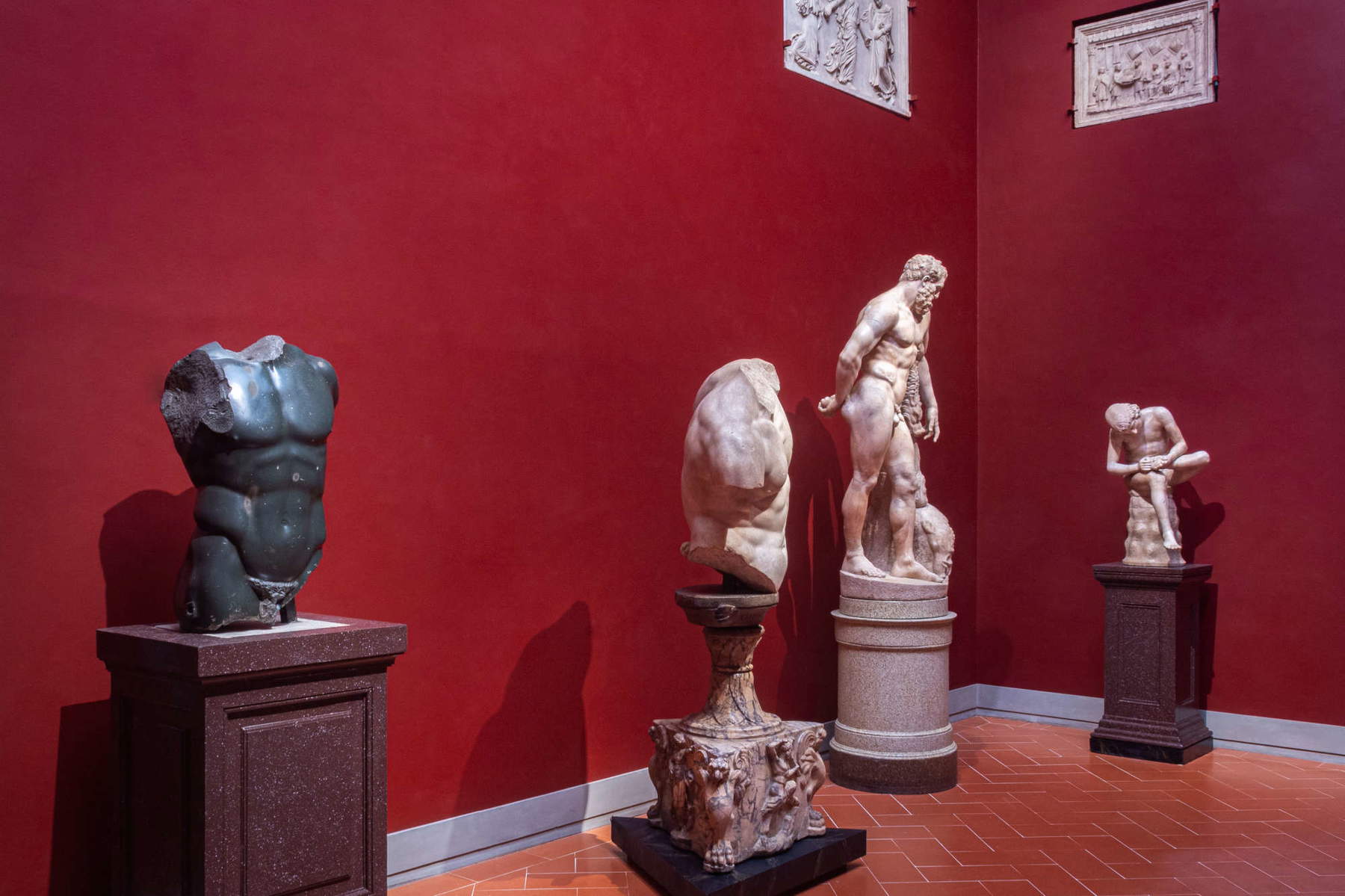
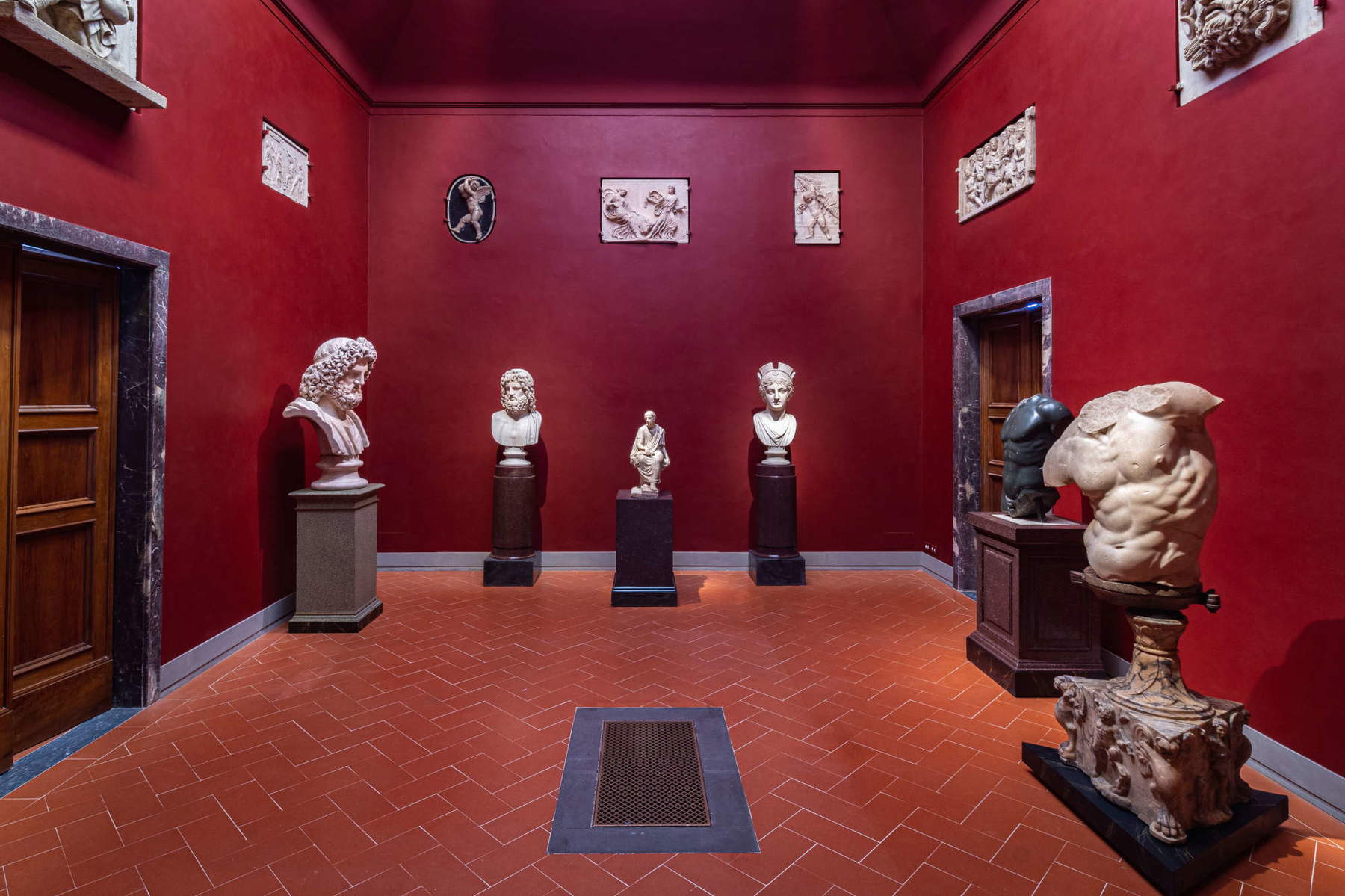
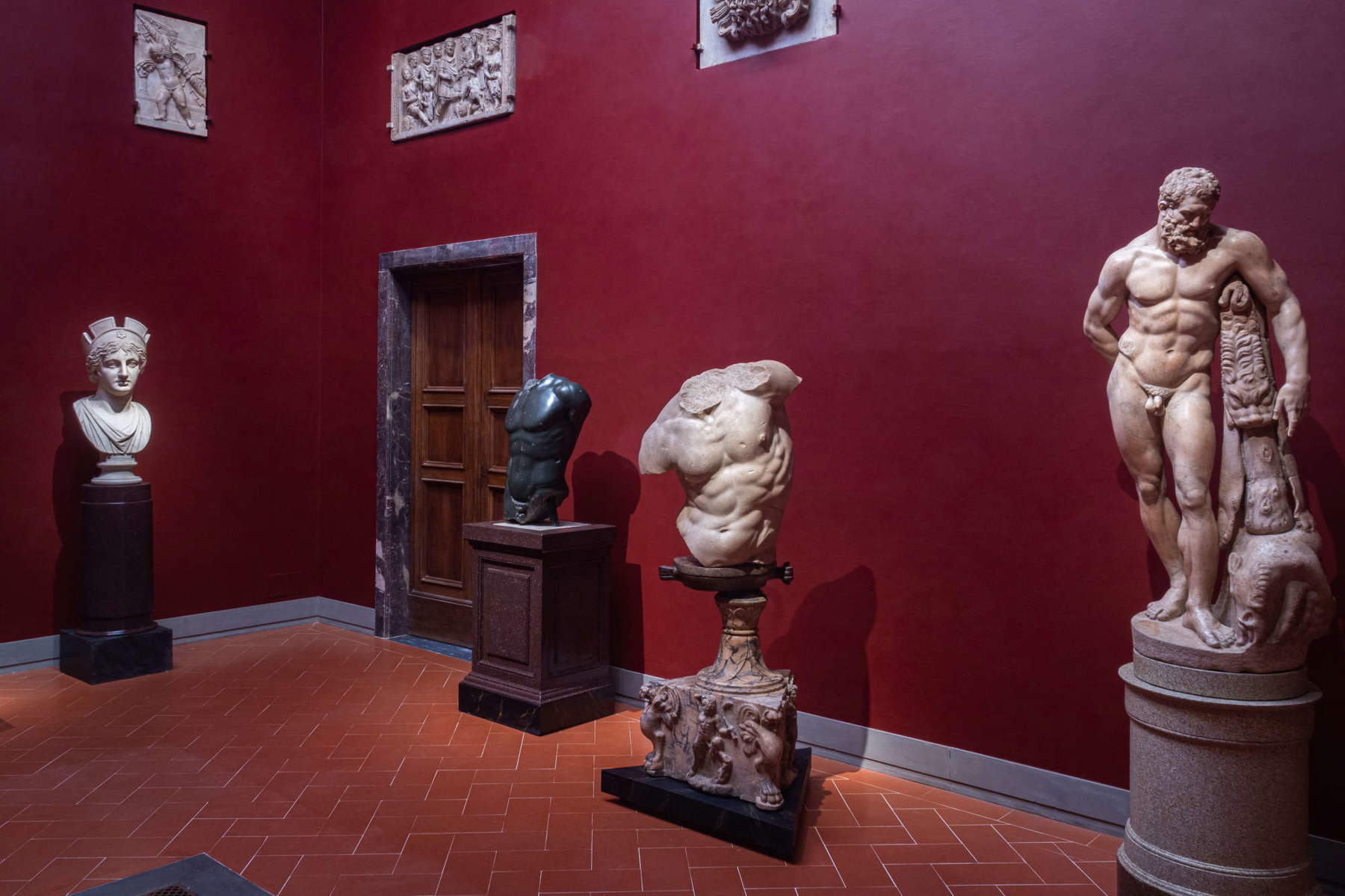
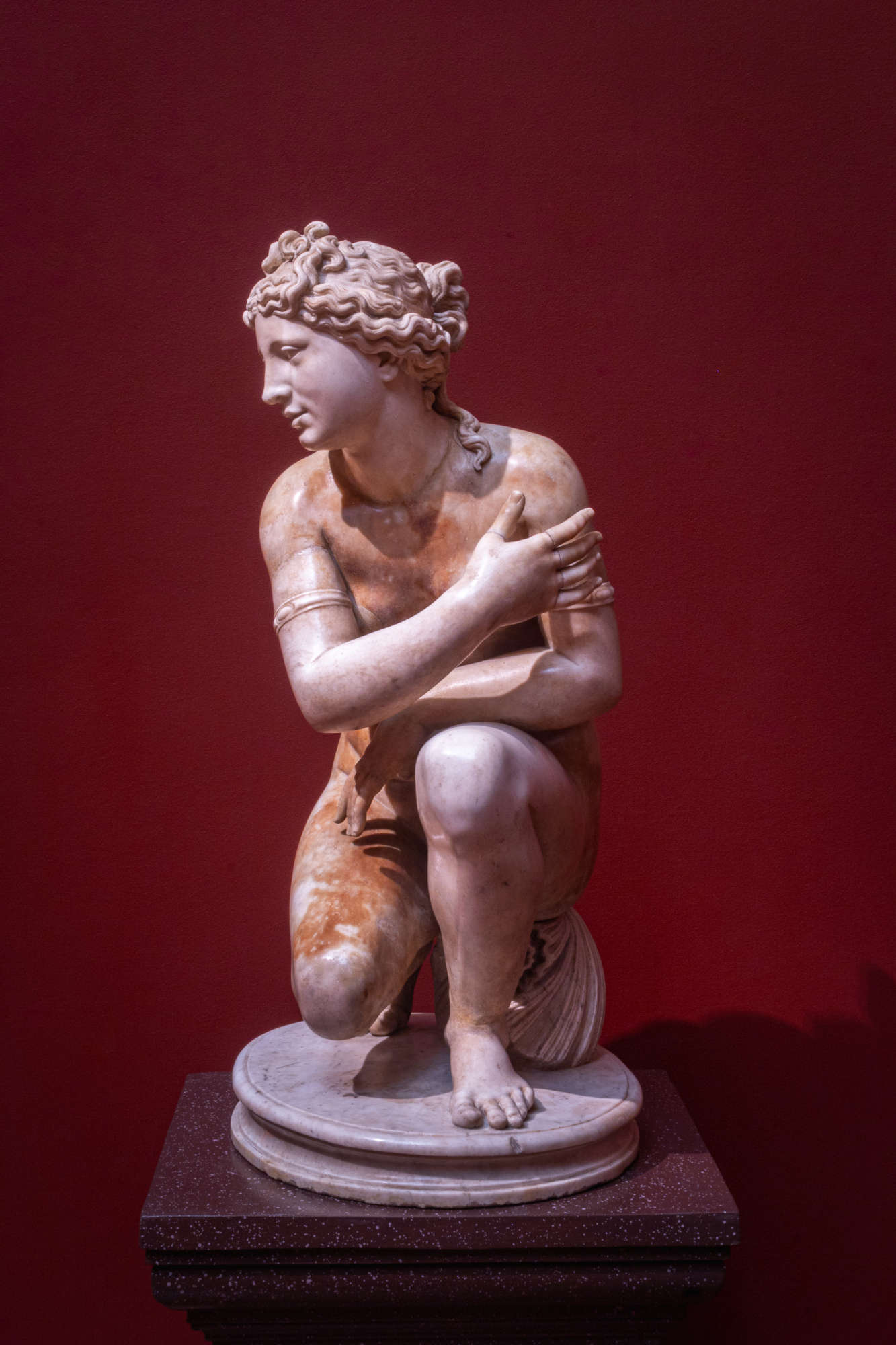
 |
| Uffizi, refurbished Sale dei Fiamminghi and Sala dei Marmi Antichi |
Warning: the translation into English of the original Italian article was created using automatic tools. We undertake to review all articles, but we do not guarantee the total absence of inaccuracies in the translation due to the program. You can find the original by clicking on the ITA button. If you find any mistake,please contact us.



























